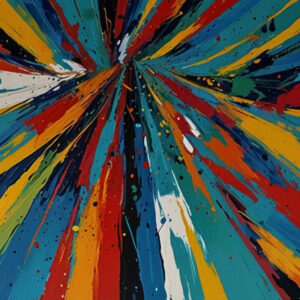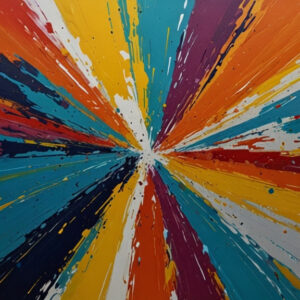Description
Haute couture refers to the creation of exclusive, custom-fitted clothing, often made from high-quality, luxurious fabrics. The term originates from French, meaning “high sewing” or “high dressmaking.” Haute couture pieces are usually handcrafted and are often showcased during fashion weeks, where designers present their unique collections to a select audience.
1.1 The Essence of Haute Couture
Haute couture represents the pinnacle of fashion design. Each piece is a work of art, crafted to perfection with intricate details and meticulous attention to craftsmanship. This exclusivity not only justifies the exorbitant prices of haute couture garments but also reinforces the notion of individuality and personal expression in fashion.
1.2 The Challenges Faced by Haute Couture Boutiques
Despite its allure, the haute couture market faces several challenges:
- Economic Constraints: The luxury market has seen fluctuations, making it essential for boutiques to differentiate themselves.
- Changing Consumer Behavior: Today’s consumers seek personalized experiences and unique products, requiring boutiques to adapt to new trends.
- Sustainability Concerns: With growing awareness of environmental issues, many consumers are prioritizing sustainable practices in their purchasing decisions.
2. The Role of 3D Modeling in Fashion
3D modeling is a digital representation of objects or environments in a three-dimensional space. In the context of fashion, it allows designers to create virtual prototypes of garments and accessories, providing a visual representation of their concepts before physical production.
2.1 Benefits of 3D Modeling
- Visualization: Designers can visualize their ideas in a detailed and realistic manner, making it easier to make design decisions.
- Prototyping: Rapid prototyping allows designers to create virtual samples, reducing the time and cost associated with traditional sampling methods.
- Customization: 3D modeling facilitates the creation of personalized designs, enabling boutiques to cater to individual customer preferences.
- Marketing: High-quality 3D renderings can be used for marketing campaigns, providing a visually stunning representation of the collection.
2.2 The Process of 3D Model Creation
The process of creating a 3D model for haute couture involves several stages:
- Concept Development: Designers begin by sketching their ideas, focusing on the silhouette, fabric, and detailing.
- Digital Rendering: Using specialized software, designers create a digital model that reflects the initial concept.
- Refinement: The model undergoes multiple iterations, incorporating feedback and making adjustments to achieve the desired look.
- Finalization: Once the model is perfected, high-quality renderings are produced for marketing and presentation purposes.
3. Custom 3D Model Art Creation Services
3.1 What are Custom 3D Model Art Creation Services?
Custom 3D model art creation services are specialized offerings that cater to the unique needs of haute couture boutiques. These services involve collaborating with skilled 3D artists who understand the intricacies of fashion design, ensuring that the final models align with the designer’s vision.
3.2 Key Features of Custom 3D Model Services
- Tailored Designs: Each project is customized to meet the specific requirements of the boutique, whether it’s a unique garment or an entire collection.
- Collaboration: Designers work closely with 3D artists to ensure their concepts are accurately translated into digital models.
- Advanced Technology: Utilizing cutting-edge software and techniques, these services produce high-quality, realistic renderings.
- Fast Turnaround: The efficiency of 3D modeling allows for quicker project completion, enabling boutiques to keep pace with rapidly changing fashion trends.
3.3 How to Choose a Custom 3D Model Service Provider
When selecting a custom 3D model service provider, boutiques should consider several factors:
- Portfolio: Reviewing previous work helps assess the provider’s capabilities and style.
- Expertise: Understanding the provider’s experience in the fashion industry can ensure they grasp the nuances of haute couture.
- Technology: Inquire about the software and tools used for modeling to ensure they meet industry standards.
- Communication: Clear and effective communication is vital for successful collaboration, so choosing a provider with strong interpersonal skills is crucial.
4. Applications of 3D Modeling in Haute Couture
4.1 Designing Collections
One of the primary applications of 3D modeling is the design of collections. Designers can create virtual representations of their garments, allowing them to experiment with different fabrics, colors, and styles. This process not only aids in visualization but also helps identify potential issues before physical production.
4.2 Customer Engagement
Custom 3D models can be used to enhance customer engagement. Boutiques can showcase their collections through interactive displays, allowing customers to explore garments in detail. Virtual fitting rooms and augmented reality applications can also enable customers to see how designs would look on them, creating a personalized shopping experience.
4.3 Marketing and Promotion
High-quality 3D renderings are invaluable for marketing purposes. Boutiques can use these visuals in promotional materials, social media campaigns, and websites. Eye-catching 3D images and videos can capture the attention of potential customers, helping to build brand awareness and attract new clientele.
4.4 E-commerce Integration
As online shopping becomes increasingly popular, integrating 3D models into e-commerce platforms can enhance the online shopping experience. Customers can view garments from multiple angles, zoom in on details, and even customize designs before making a purchase.
5. Case Studies: Successful Implementation of 3D Modeling in Haute Couture
5.1 Case Study 1: Dior
Dior has embraced 3D modeling technology to enhance its design process. The brand’s creative team utilizes digital tools to visualize new collections, allowing for rapid prototyping and design adjustments. This approach not only speeds up the design process but also ensures that the final products align with the brand’s luxurious aesthetic.
5.2 Case Study 2: Balenciaga
Balenciaga has leveraged 3D modeling to create unique fashion experiences for its customers. The brand has developed virtual showrooms that allow customers to explore new collections in a digitally immersive environment. This innovative approach has attracted attention and generated buzz around the brand, demonstrating the effectiveness of 3D modeling in engaging consumers.
5.3 Case Study 3: Gucci
Gucci has integrated 3D modeling into its marketing strategy, using high-quality renderings to promote new collections across various platforms. The brand’s visually striking 3D images have captured the attention of fashion enthusiasts, helping to solidify its position as a leader in the industry.
6. The Future of 3D Modeling in Haute Couture
6.1 Advancements in Technology
As technology continues to evolve, the capabilities of 3D modeling will expand. Artificial intelligence, machine learning, and advanced rendering techniques will enable even more realistic and intricate designs. Additionally, the use of virtual and augmented reality will transform how customers interact with fashion, creating immersive shopping experiences.
6.2 Sustainability and Ethical Considerations
The fashion industry is increasingly focused on sustainability, and 3D modeling can play a significant role in this shift. By reducing the need for physical samples and minimizing waste, boutiques can adopt more sustainable practices. Furthermore, 3D modeling allows for the exploration of eco-friendly materials and production methods, promoting ethical fashion.
6.3 The Rise of Virtual Fashion
Virtual fashion is gaining traction as a new frontier in the industry. With the rise of digital-only fashion shows and virtual garments, 3D modeling will become even more integral to the design process. Boutiques may explore creating virtual collections that exist solely in the digital realm, appealing to tech-savvy consumers.
Conclusion
Custom 3D model art creation services present a transformative opportunity for haute couture boutiques. By embracing this technology, designers can enhance their creative processes, engage customers, and stay competitive in a rapidly evolving market. As the fashion industry continues to embrace digitalization, the future of haute couture lies in the seamless integration of traditional craftsmanship with cutting-edge technology. The journey into the world of 3D modeling is not just a trend; it’s a necessary evolution that will shape the future of fashion. With its potential for personalization, sustainability, and innovation, the 3D model art creation service will become an indispensable tool for haute couture boutiques striving to define their unique identities in the digital age.





Reviews
There are no reviews yet.